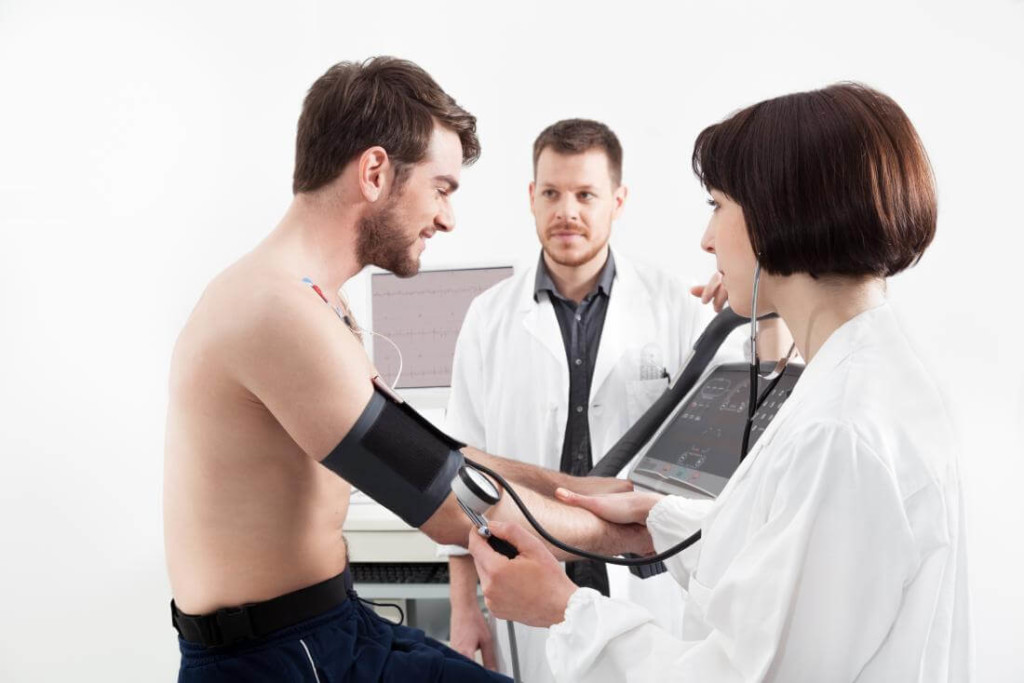Calls for Ukraine
Calls for Europe
Calls for USA

The aortic valve is located at the border of the left ventricle and the aorta. It prevents blood from flowing back from the aorta to the left ventricle. In diseases of the aortic valve, the blood flow does not work properly. Patients with acute aortic insufficiency live no more than 1 year without surgical treatment. Aortic valve replacement is an operation that maintains proper blood circulation and is responsible for the functioning of each organ at the cellular level.
Diseases of the aortic valve can be congenital or acquired due to other pathologies.
Cardiologists diagnose the following types of aortic valve diseases:
As the disease progresses, patients develop symptoms such as:
If a person has multiple symptoms, they should see a cardiologist immediately. Timely diagnostics will help to make the right decision about further treatment and possible surgery.

To make an accurate diagnosis and choose a treatment, cardiologists and cardiac surgeons prescribe a series of examinations to patients. The main diagnostics, which allows doctors to determine the pathology of the heart associated with the work of the mitral valve, includes:
Aortic valve stenosis and insufficiency is generally treated by replacing the non-functioning valve with a biological or mechanical prosthesis.
There are two types of treatment for aortic valve disease: conservative (medication) and surgical.
Taking medications does not expand the lumen of the aorta, but significantly improves blood circulation and the general condition of the patient. If the disease progresses, it is necessary to carry out surgical treatment as early as possible. The operation must be done before left ventricular failure develops. Otherwise, surgery may have complications.
With a slight narrowing of the aorta, the operation is postponed until the patient comes of age, waiting for the end of the growth phase of the body. However, even newborn babies sometimes need urgent surgery.
Indications for surgery:

The operation to replace the aortic valve on the heart is performed using an endovascular probe. The doctor advances the thinnest catheter (probe) along the vascular bed from the femoral artery to the aorta – the place where the stenotic valve is located. This technique is called percutaneous aortic valve replacement.
What happens if the aortic valve of the heart is not changed?
If the heart valve is insufficient, its flaps do not close completely, so some of the blood flows back from the valve. With stenosis, the heart valve is narrowed and the heart has to work hard against great resistance. This leads to serious complications and even death.
It usually takes 3-4 months from the date of the operation to fully restore vital activity. The timing depends on the individual characteristics of the patient, such as age and the presence of concomitant diseases.
The patient is usually discharged from the clinic 10-20 days after surgery. Rehabilitation after aortic valve replacement surgery should include specific arm and chest exercises that the patient can do at home.
The final cost of aortic valve replacement will be influenced by the following factors:
Examples of prices for aortic valve replacement in clinics around the world:
The cost of a TAVI operation abroad can reach $70 000. As a rule, large medical centers abroad include in the price of the operation: transfer from the airport to the clinic, hospital stay, diagnostics and other services.
When choosing a country and a clinic for the operation, it should be borne in mind that often in CIS hospitals, patients need to make additional payments unofficially (that is, not to the cashier of a medical institution). Overseas cardiac surgery departments accept payment without shadow fees.
How long does aortic valve replacement surgery take?
The total time of the operation using the minimally invasive method using a catheter is 1-1.5 hours. Chest cavity surgery takes longer.
How long do patients live after aortic valve replacement?
A successful operation using a high-quality endoprosthesis makes it possible for a person to live for at least 30 years.
Specialists of foreign clinics carry out transplantation of aortic valve prostheses in a minimally invasive way, which reduces postoperative risks. Foreign hospitals use only reliable implants that do not need to be replaced over time.
Is it possible to exercise after aortic valve replacement?
Within 3 months after the operation, the patient must not:
Intense physical activity is not recommended, which can lead to injury to the sternum.
What is the nutritional status after aortic valve replacement?
The diet after aortic valve replacement includes the following food restrictions:
The diet should be enriched with vegetable oils, fresh vegetables and fruits, fish and protein products.
Please rate the work of MedTour
